Abstract
OBJECTIVES: The purpose of this study was to examine empirically the relationship between physicians' race or ethnicity and their care for medically underserved populations. METHODS: Generalist physicians who received the MD degree in 1983 or 1984 (n = 1581) were surveyed. The personal and background characteristics of four racial/ethnic groups of physicians were compared with the characteristics of their patients. RESULTS: When the potentially confounding variables of gender, childhood family income, childhood residence, and National Health Services Corps financial aid obligations were controlled, generalist physicians from underrepresented minorities were more likely than their nonminority counterparts to care for medically underserved populations. CONCLUSIONS: Physicians from underrepresented minorities are more likely than others to care for medically underserved populations.
Full text
PDF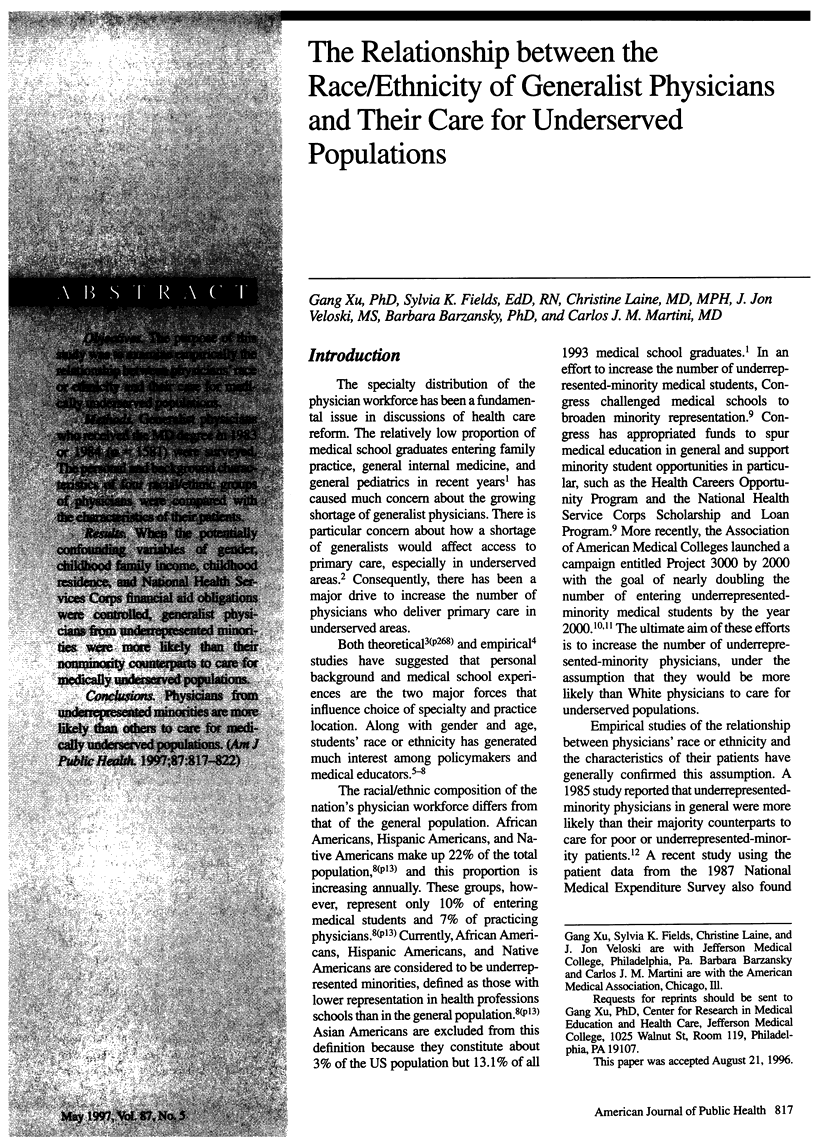
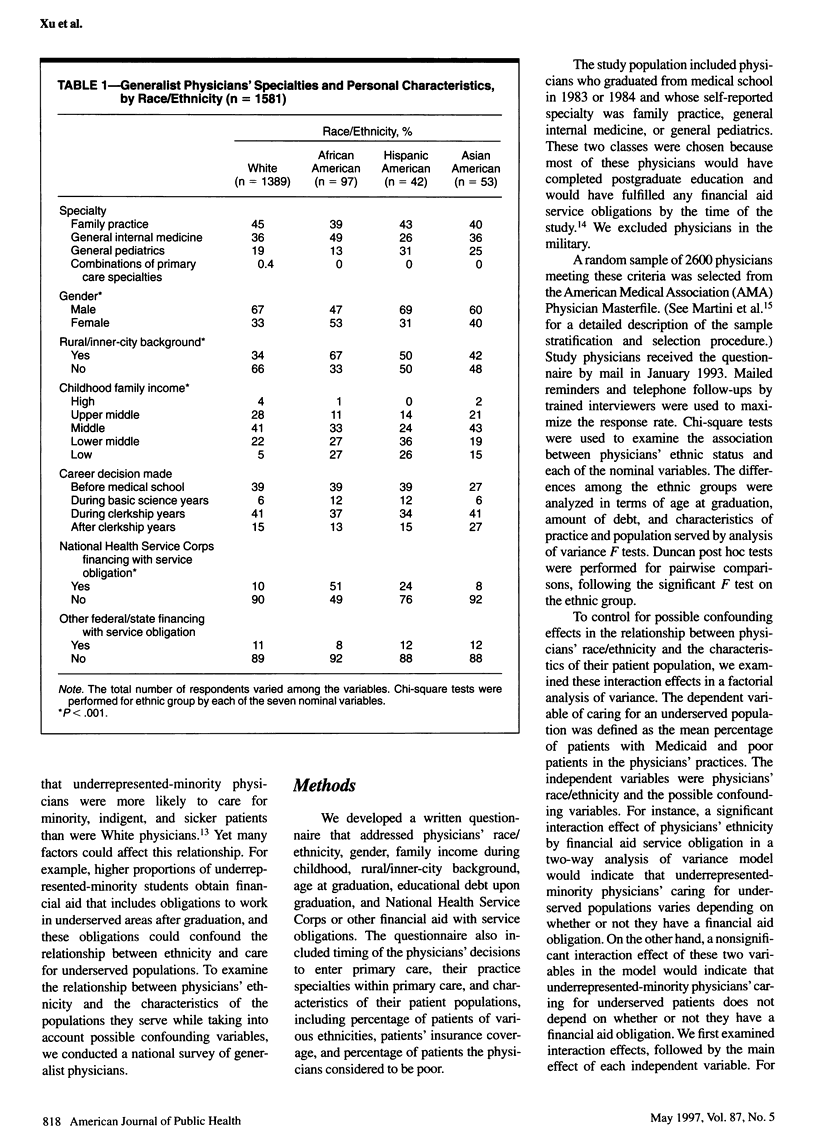
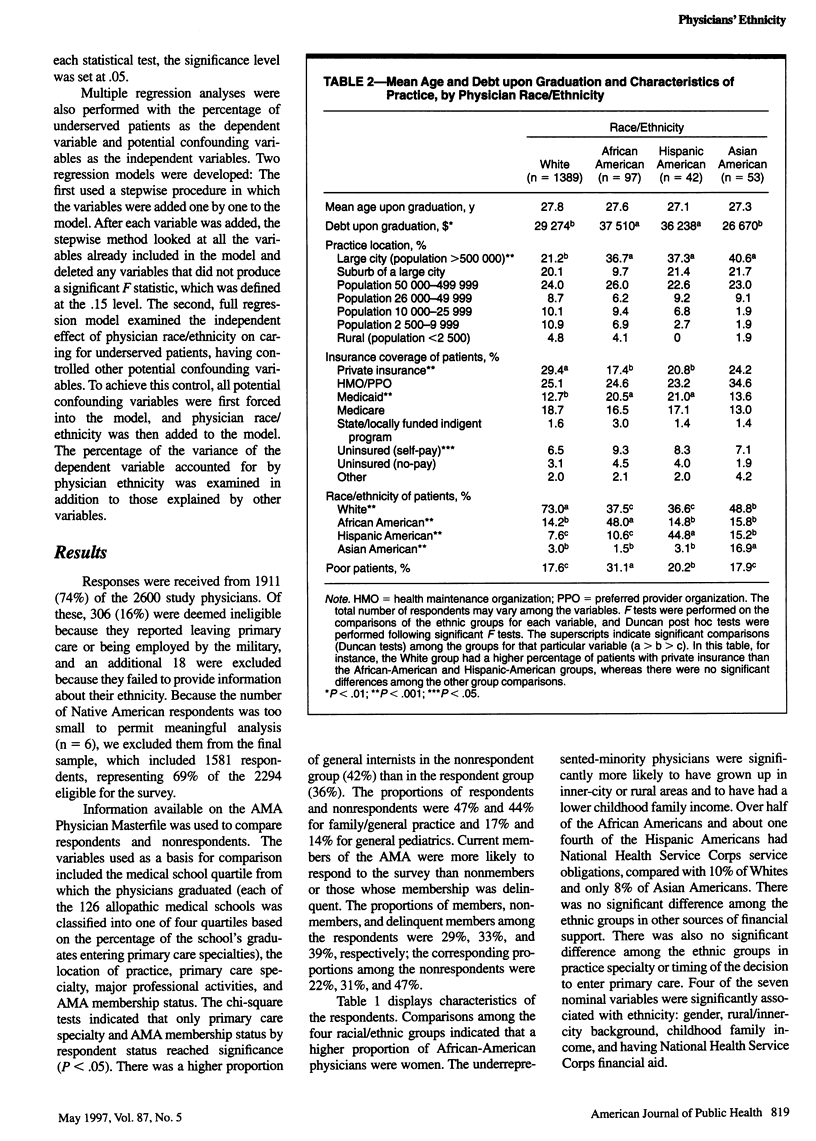
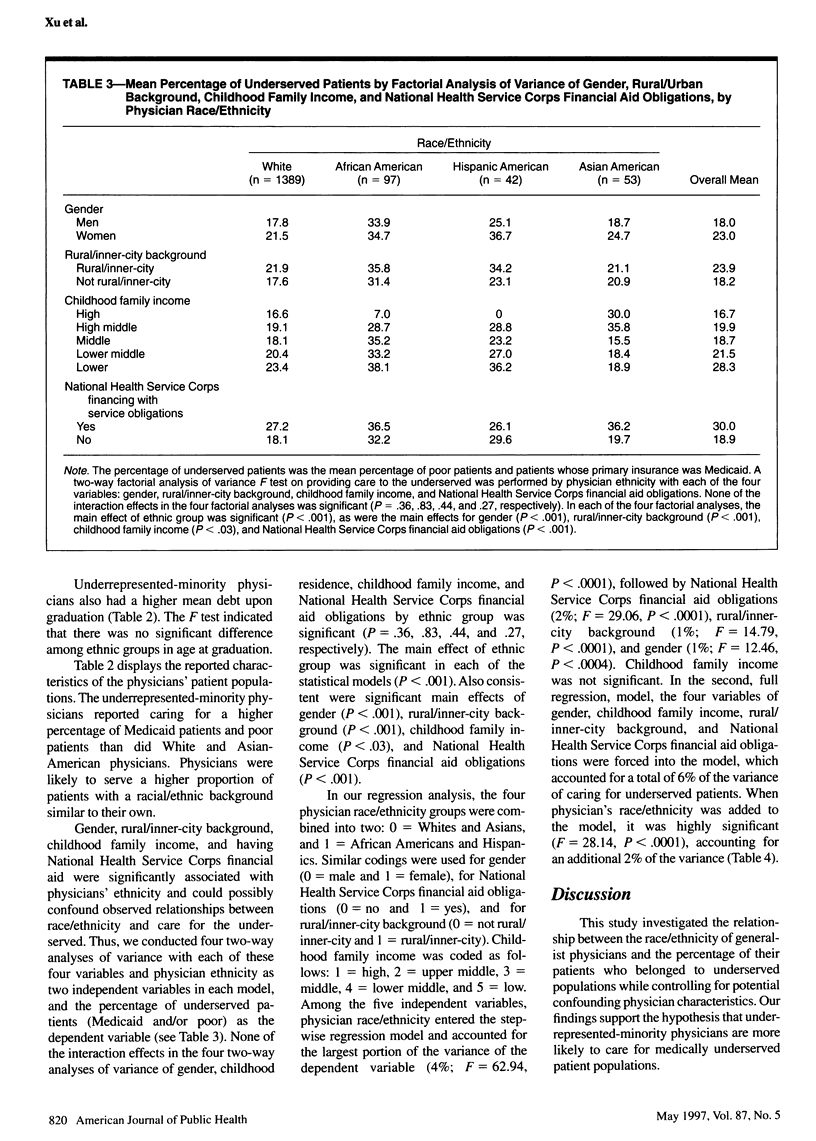

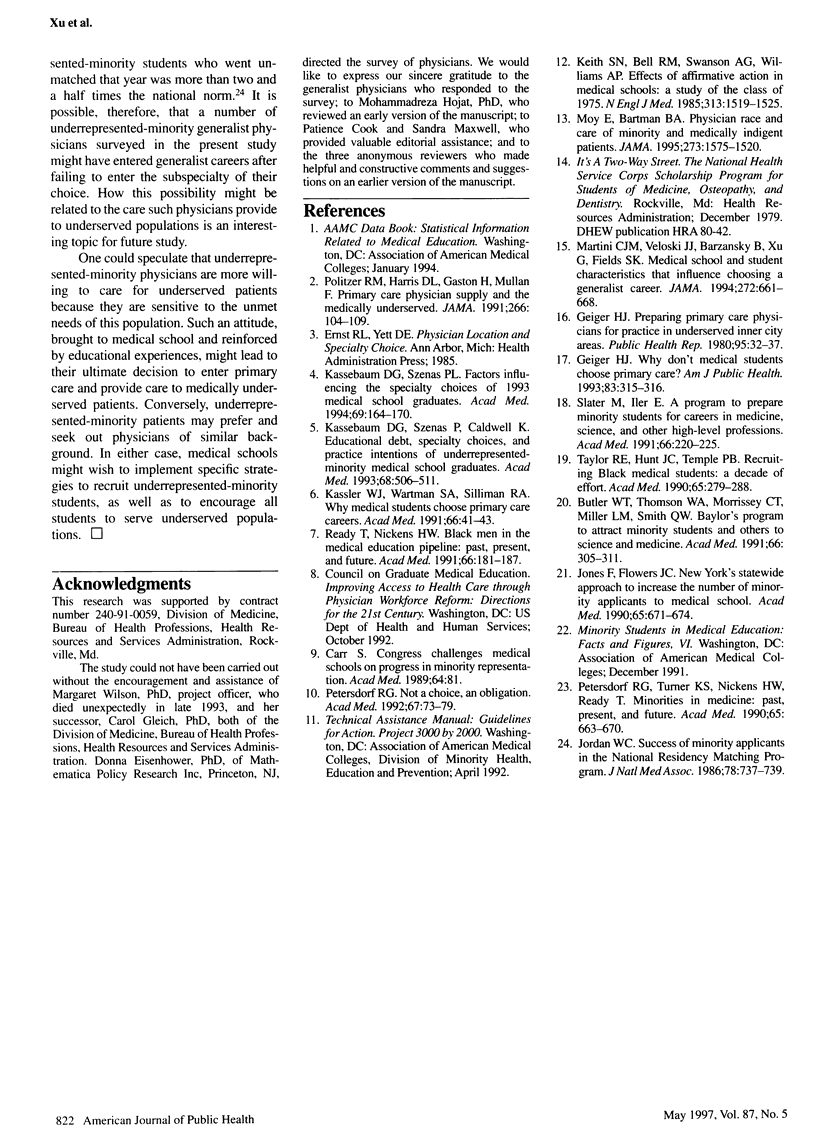
Selected References
These references are in PubMed. This may not be the complete list of references from this article.
- Butler W. T., Thomson W. A., Morrissey C. T., Miller L. M., Smith Q. W. Baylor's program to attract minority students and others to science and medicine. Acad Med. 1991 Jun;66(6):305–311. doi: 10.1097/00001888-199106000-00001. [DOI] [PubMed] [Google Scholar]
- Carr S. Congress challenges medical schools on progress in minority representation. Acad Med. 1989 Feb;64(2):81–81. doi: 10.1097/00001888-198902000-00008. [DOI] [PubMed] [Google Scholar]
- Geiger H. J. Sophie Davis School of Biomedical Education at City College of New York prepares primary care physicians for practice in underserved inner-city areas. Public Health Rep. 1980 Jan-Feb;95(1):32–37. [PMC free article] [PubMed] [Google Scholar]
- Geiger H. J. Why don't medical students choose primary care? Am J Public Health. 1993 Mar;83(3):315–316. doi: 10.2105/ajph.83.3.315. [DOI] [PMC free article] [PubMed] [Google Scholar]
- Jones F., Flowers J. C. New York's statewide approach to increase the number of minority applicants to medical school. Acad Med. 1990 Nov;65(11):671–674. doi: 10.1097/00001888-199011000-00002. [DOI] [PubMed] [Google Scholar]
- Jordan W. C. Success of minority applicants in the National Residency Matching Program. J Natl Med Assoc. 1986 Aug;78(8):737–739. [PMC free article] [PubMed] [Google Scholar]
- Kassebaum D. G., Szenas P. L., Caldwell K. Educational debt, specialty choices, and practice intentions of underrepresented-minority medical school graduates. Acad Med. 1993 Jun;68(6):506–511. doi: 10.1097/00001888-199306000-00013. [DOI] [PubMed] [Google Scholar]
- Kassebaum D. G., Szenas P. L. Factors influencing the specialty choices of 1993 medical school graduates. Acad Med. 1994 Feb;69(2):163–170. doi: 10.1097/00001888-199402000-00027. [DOI] [PubMed] [Google Scholar]
- Kassler W. J., Wartman S. A., Silliman R. A. Why medical students choose primary care careers. Acad Med. 1991 Jan;66(1):41–43. doi: 10.1097/00001888-199101000-00012. [DOI] [PubMed] [Google Scholar]
- Keith S. N., Bell R. M., Swanson A. G., Williams A. P. Effects of affirmative action in medical schools. A study of the class of 1975. N Engl J Med. 1985 Dec 12;313(24):1519–1525. doi: 10.1056/NEJM198512123132406. [DOI] [PubMed] [Google Scholar]
- Martini C. J., Veloski J. J., Barzansky B., Xu G., Fields S. K. Medical school and student characteristics that influence choosing a generalist career. JAMA. 1994 Sep 7;272(9):661–668. [PubMed] [Google Scholar]
- Moy E., Bartman B. A. Physician race and care of minority and medically indigent patients. JAMA. 1995 May 17;273(19):1515–1520. [PubMed] [Google Scholar]
- Petersdorf R. G. Not a choice, an obligation. Acad Med. 1992 Feb;67(2):73–79. doi: 10.1097/00001888-199202000-00003. [DOI] [PubMed] [Google Scholar]
- Petersdorf R. G., Turner K. S., Nickens H. W., Ready T. Minorities in medicine: past, present, and future. Acad Med. 1990 Nov;65(11):663–670. doi: 10.1097/00001888-199011000-00001. [DOI] [PubMed] [Google Scholar]
- Politzer R. M., Harris D. L., Gaston M. H., Mullan F. Primary care physician supply and the medically underserved. A status report and recommendations. JAMA. 1991 Jul 3;266(1):104–109. [PubMed] [Google Scholar]
- Ready T., Nickens H. W. Black men in the medical education pipeline: past, present, and future. Acad Med. 1991 Apr;66(4):181–187. doi: 10.1097/00001888-199104000-00001. [DOI] [PubMed] [Google Scholar]
- Slater M., Iler E. A program to prepare minority students for careers in medicine, science, and other high-level professions. Acad Med. 1991 Apr;66(4):220–225. doi: 10.1097/00001888-199104000-00011. [DOI] [PubMed] [Google Scholar]
- Taylor R. E., Jr, Hunt J. C., Temple P. B. Recruiting black medical students: a decade of effort. Acad Med. 1990 May;65(5):279–288. doi: 10.1097/00001888-199005000-00001. [DOI] [PubMed] [Google Scholar]


